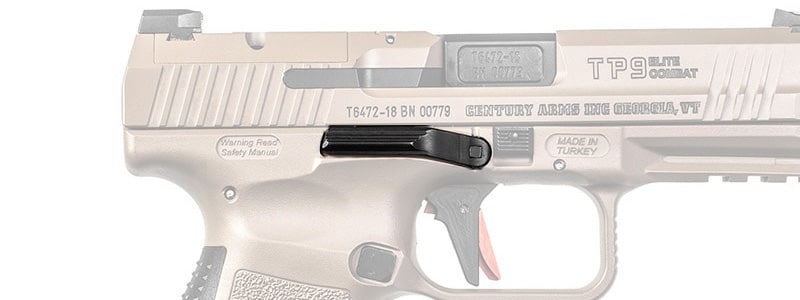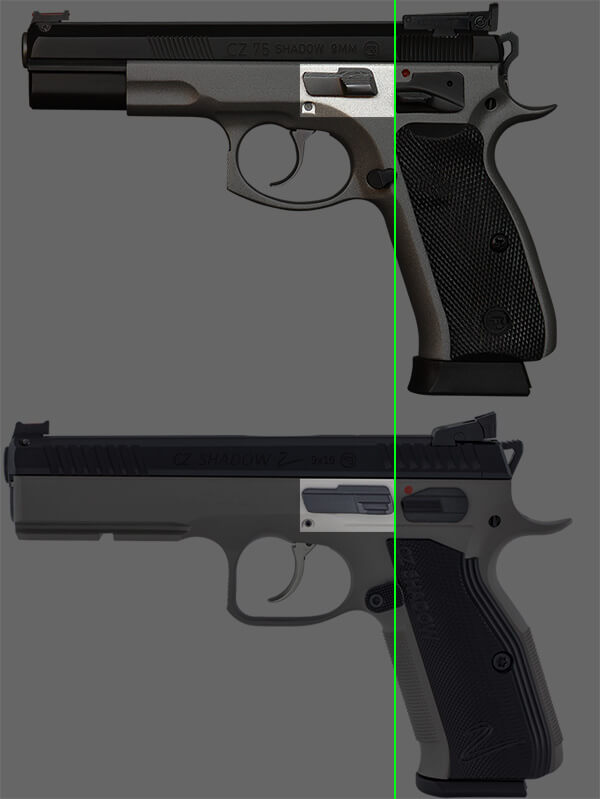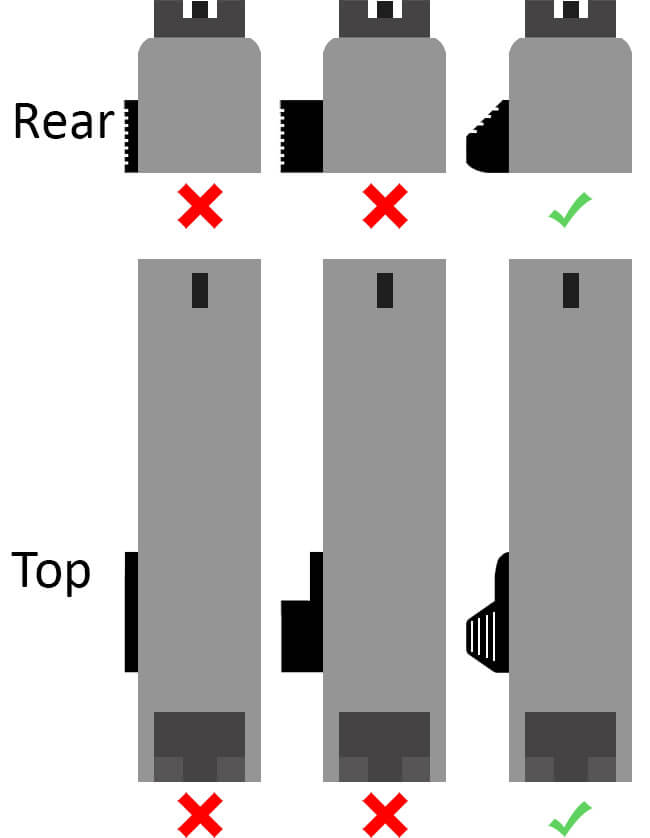Pistol Slide Stop: A Key to Safety and Reloads
 Bryan Hill / March 21 2024
Bryan Hill / March 21 2024

A pistol's slide stop is often overlooked, but it's important when unloading your pistol,
and for certain types of shooters. We'll cover how a better pistol slide stop can help you,
how to tell a good pistol slide stop from a bad one, and whether you should upgrade yours.
On This Page:
- Basics
- Why is a Good Slide Stop Important?
- What Makes a Good Slide Stop?
- Should I Upgrade My Slide Stop?
- References
Basics
The slide stop (or slide release, or slide lock) controls whether your slide is locked back.
When you run out of ammo, the slide locks itself back.
To release it, you can push the slide stop down. This technique is the fastest, but it only works if the slide stop has the right ergonomics.
When unloading a pistol, you may want to lock the slide back to show it's unloaded.
Or, when clearing jams, you may have to lock the slide open.
To do this, hold the slide stop up, then pull the slide back.
Why is a Good Slide Stop Important?
You'll have faster, more consistent reloads and jam clears.
This is most important for competitive shooters, police, and other uniformed defenders.
What Makes a Good Slide Stop?
-
Easy to reach.
It should be close to your dominant thumb on the pistol.
Look at how much closer the second pistol's slide stop is to the grip:

If you must adjust your grip to use the slide stop, consider a pistol that better fits your hand.
-
Grippy texture.
Once you're touching the slide stop, it must not slip from your finger or thumb.
It should at least have serrations cut into it.
-
Thick enough to push up/down.
A flat slide stop relies on the serrations gripping your finger or thumb.
What if it's wet from sweat, rain, oil, blood, etc.?
If it's thick enough to push up or down like a lever, it works no matter what.
-
Big enough.
Even if it's in the right spot, you'll miss it if it's too small.
Look at the serrated area of each pistol's slide stop. The second pistol's is about twice as big.

The bigger your hands, the bigger the slide stop should be.
-
Streamlined design. Concealed carriers may have concerns over a thick, big slide stop snagging.
I can tell you from personal experience that is not an issue if the slide stop has all its corners and edges smoothed out, and it's no thicker than needed for pushing up or down like a lever.
Examples:

A good design has no sharp edges, and the thickness is beveled, mainly on the top.
Why top beveling? That's the side that could snag when drawing a pistol.
Should I Upgrade My Slide Stop?
Yes, if you find your current slide stop:
-
Is hard to find without looking
-
Is hard to reach
-
Slips off your thumb or finger when wet
Related Articles
Feedback
Are you happy with this page?
References
-
Fitts's law (2020)
-
Fitts's law (2018)
-
An Interactive Visualisation of Fitts's Law (2015)